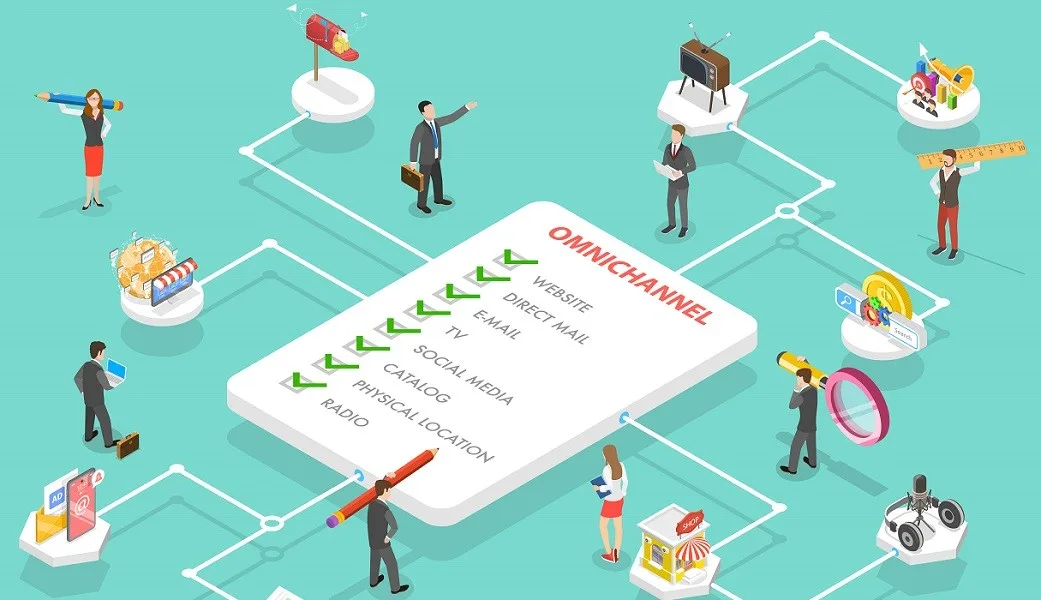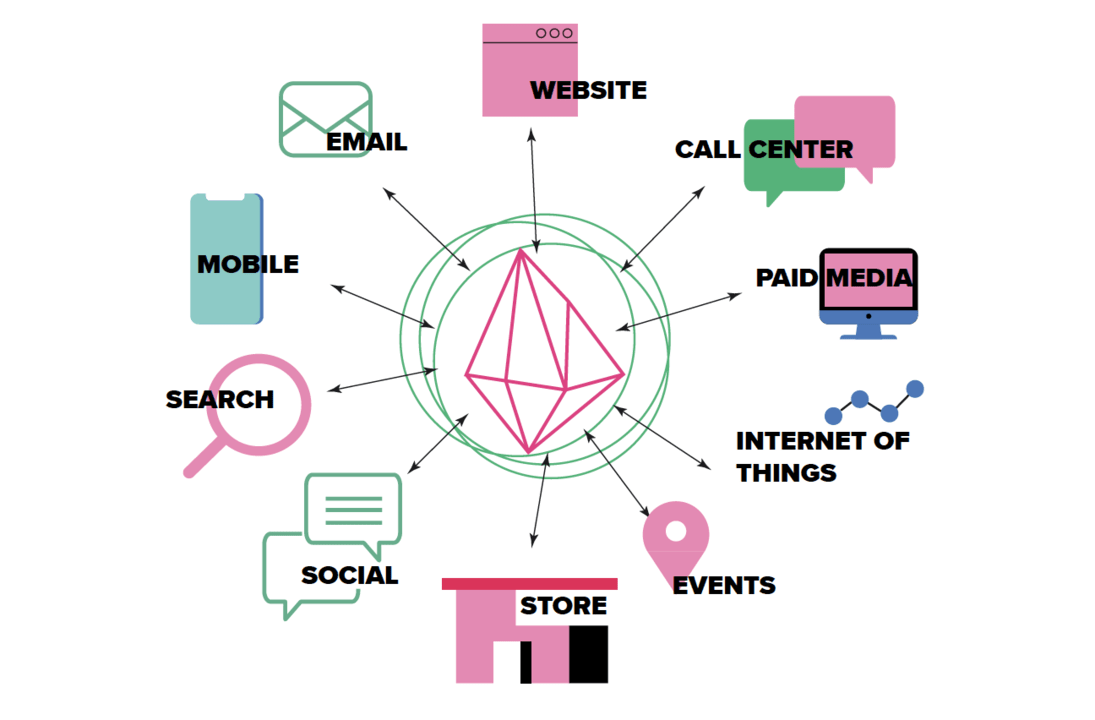
key takeaways
Success in today’s business environment depends on the smooth integration of digital and physical channels. Businesses may give clients a consistent and seamless experience by bridging the gap between online and offline encounters. This connection increases client pleasure and loyalty in addition to improving operational efficiency. To properly integrate their channels, organizations must overcome obstacles like organizational alignment, technological complexity, and privacy issues. Through the implementation of omnichannel platforms, prioritization of customer-centric initiatives, cultivation of a collaborative culture, and performance monitoring, organizations may establish a smooth and customized customer experience. Integrated channels have a significant impact on the customer experience by empowering users and fostering a sense of loyalty and trust. Looking ahead, companies should adopt innovations like artificial intelligence (AI), smart devices, IoT, and social media integration to stay ahead of the competition and thrive in the ever-evolving business landscape.
The Significance of Integration
The merging of digital and physical channels has grown more important in today’s dynamic business environment. By bridging the gap between the online and offline worlds, businesses can offer their customers a smooth experience through this integration. Businesses can give clients a unified and consistent experience across several touchpoints by connecting these channels.
Moreover, integration is important since it can improve operational effectiveness. Businesses can reduce redundancy and streamline their operations by connecting digital and physical channels. Both cost reductions and increased production result from this.
In general, it is impossible to overstate the importance of integration. It enhances customer satisfaction and operational effectiveness while helping organizations remain competitive in a world where digital technology is the norm.
Challenges Faced in Integration
Businesses frequently encounter a number of difficulties when merging digital and physical channels, despite the many advantages of doing so. The complexity of integrating many technologies and systems is one of the primary obstacles. Companies may have outdated systems that are difficult to integrate with more recent digital platforms.
The requirement for organizational alignment presents another difficulty. Collaboration between various business units is necessary for channel integration, but this can be difficult when there are silos and competing goals.
Concerns about security and privacy are additional difficulties that must be resolved throughout the integration process. Companies need to make sure that consumer information is secure and that privacy laws are followed.
It will take careful preparation, teamwork, and the appropriate technological solutions to overcome these obstacles. Businesses can successfully connect their digital and physical channels by addressing these issues.
Strategies for Successful Integration
Businesses can use many ways to successfully integrate digital and physical channels. Purchasing a strong omnichannel platform that can integrate various systems and channels with ease is one tactic. Consistent experiences across channels and a uniform picture of consumer data should be made possible by this platform.
Setting customer-centricity as the top priority is another tactic. Businesses may create integrated experiences that live up to customer expectations by understanding their needs and preferences. This could entail carrying out studies, getting input, and iteratively enhancing the integration in light of user insights.
Businesses might also gain from encouraging a collaborative and cross-functional teaming culture. This entails dismantling departmental silos and promoting collaboration in order to achieve integration as a shared objective. In this process, regular contact and knowledge sharing are crucial.
Finally, companies ought to keep an eye on and assess the effectiveness of their integrated channels on a constant basis. As a result, they are able to pinpoint areas in need of development and make data-driven choices to maximize integration.
Businesses can boost the possibility of a successful integration and profit from a smooth customer experience by putting these methods into practice.
Impact of Integrated Channels on Customer Experience
The way that digital and physical channels are integrated affects the customer experience significantly. It enables clients to communicate with a company across the channels of their choice, including mobile, in-store, and online. Customer satisfaction and loyalty are increased by this flexibility and convenience.
Personalized experiences are also made possible via integrated channels. Businesses can customize their goods and interactions to individual tastes by leveraging client data from various touchpoints. The consumer experience is made more relevant and engaging with this level of customisation.
Moreover, seamless transitions between online and offline encounters are made possible by interconnected channels. Customers can quickly pick up their products in-store after beginning their buying adventure online, for instance. Friction is decreased and a consistent brand experience is offered by this omni-channel experience.
All things considered, interconnected channels have a big effect on the consumer experience. Customers are empowered, customisation is improved, and a smooth trip that fosters loyalty and trust is created.
Future Trends in Channel Integration
There are a few upcoming developments in channel integration that companies need to be mindful of. One trend is the growing application of machine learning and artificial intelligence to enhance integration. Large volumes of data can be analyzed by these technologies to find trends, forecast consumer behavior, and automate procedures.
The popularity of voice-activated and smart devices is another trend. Customers may be given new opportunities for interaction and purchase through the integration of these devices with other digital and physical channels. To keep ahead of the competition, businesses should look for ways to use these technology.
Channel integration will also be greatly impacted by the Internet of Things (IoT). IoT makes it possible to connect real objects to the digital world, opening up new possibilities and experiences for enterprises. Personalized recommendations, better customer service, and better inventory management are all possible outcomes of this integration.
Finally, social media platforms will keep developing as crucial integration vehicles. Businesses may interact with customers, obtain insights, and deliver smooth experiences by utilizing the data and functionality of social media. A business can increase its reach and influence by integrating social media channels with other digital and physical channels.
In conclusion, companies should closely monitor these upcoming developments in channel integration and modify their plans as necessary. It will be crucial to adopt new technology and maintain flexibility. to thrive in the ever-changing business landscape.

conclusion
In conclusion, organizations that want to succeed and remain competitive must seamlessly integrate digital and physical channels into their operations. This is more than simply a trend. Businesses may deliver clients a consistent and seamless experience that increases customer happiness and loyalty by bridging the gap between online and offline encounters. Successful integration may be achieved by putting customer-centric approaches first, investing in omnichannel platforms, encouraging cooperation, tracking performance, and prioritizing technological complexity and organizational alignment, among other techniques. Integrated channels have a significant impact on the customer experience, empowering clients, fostering trust, and eventually propelling company success. Business leaders must embrace emerging trends like artificial intelligence (AI), smart gadgets, the Internet of Things (IoT), and social media integration. to staying ahead of the curve and delivering exceptional experiences to customers.
FAQ
What is the combination of physical and digital?
In the context of business, the seamless merging of online and offline encounters is referred to as the convergence of physical and digital channels. Through this connection, clients can communicate with a business via a variety of channels, including mobile devices, websites, and physical stores. Businesses may improve customer happiness and loyalty by providing a comprehensive and consistent customer journey by bridging the gap between the real and digital worlds. Personalized experiences, expedited procedures, and a consistent brand experience across several platforms are made possible by this mix of channels. In today’s digital-first world, businesses must integrate their physical and digital channels if they want to remain competitive and provide great consumer experiences.
How does integrating physical and digital channels create a better shopping experience for customers and what challenges do businesses face in achieving?
Customers have a more enjoyable buying experience when physical and digital channels are integrated since it provides them with a convenient and seamless trip across several touchpoints. Consumers can communicate with a company via mobile devices, in-store, or the internet, offering customization and flexibility. In the end, this integration creates a more consistent brand experience by improving consumer happiness, loyalty, and engagement.
Businesses must overcome obstacles to accomplish this integration, though. The complexity of integrating many technologies and systems is one of the primary obstacles. Compatibility problems may arise from older systems’ difficult alignment with more recent digital platforms. Furthermore, organizational alignment is critical to the success of integration since, while departmental collaboration is vital, silos and competing objectives can impede it. Concerns about security and privacy also present difficulties because companies need to ensure the protection of customer data and compliance with privacy regulations.
Despite these obstacles, companies can overcome them with careful preparation, teamwork, and the appropriate technological solutions. Businesses may successfully link their digital and physical channels to give their customers a better purchasing experience by tackling these issues.
What is an example of channel integration?
The retail sector provides a good illustration of channel integration, as companies there are able to easily link their online and physical storefronts. Customers may, for example, peruse merchandise on a business’s website, buy it, and then decide to pick it up in-person. Customers can buy conveniently across channels thanks to this connection, which also enables the company to monitor customer behavior and preferences for a more tailored shopping experience. Through seamless integration of their digital and physical channels, merchants can offer a more satisfying and loyal consumer experience.
Why is channel integration important?
In today’s digital world, channel integration is essential for businesses for a number of reasons. First of all, it enables businesses to offer their clients a smooth and uniform experience via a range of touchpoints. Customers’ trust and loyalty are increased by this consistency, which eventually leads to business success.
Additionally, channel integration helps organizations to better understand the behavior and preferences of their customers by allowing them to compile insightful data and insights from many channels. Businesses may personalize their interactions and services and provide customers a more relevant and engaging experience by utilizing this data.
Additionally, by simplifying procedures and lowering friction across online and physical channels, channel integration promotes operational efficiency. This effectiveness streamlines internal processes, which lowers costs and boosts productivity, in addition to enhancing the general client experience.
In general, channel integration is critical since it boosts corporate growth and competitiveness in a quickly changing digital environment while also improving the customer experience. Companies that put integration first are better able to satisfy customers, change with the times, and succeed in the long run.
Hope this article was helpful for more check out our previous blog post by clinking here

